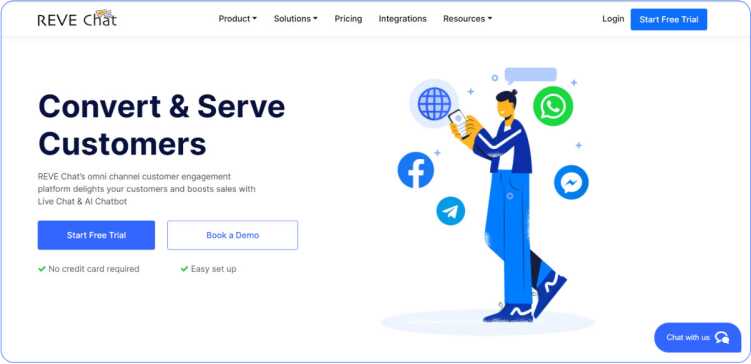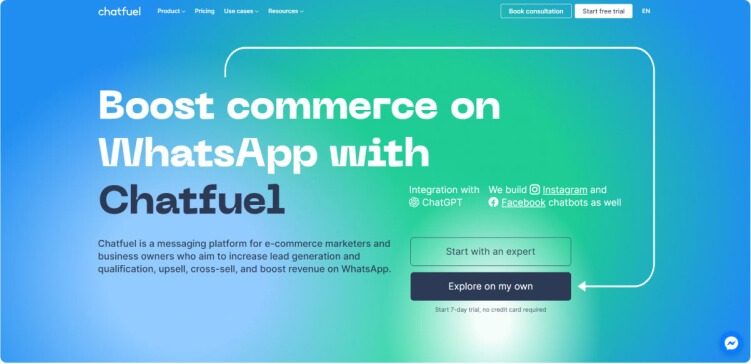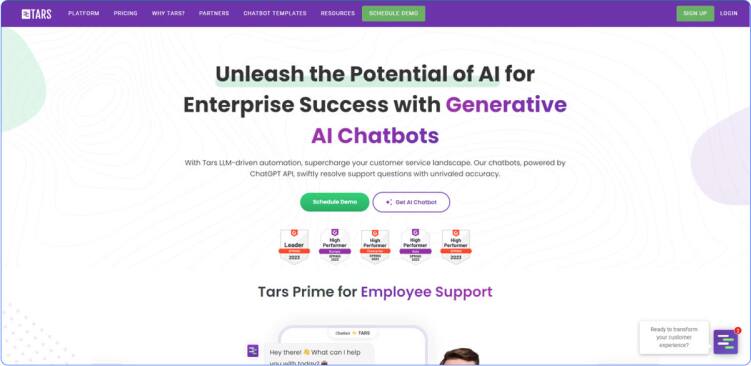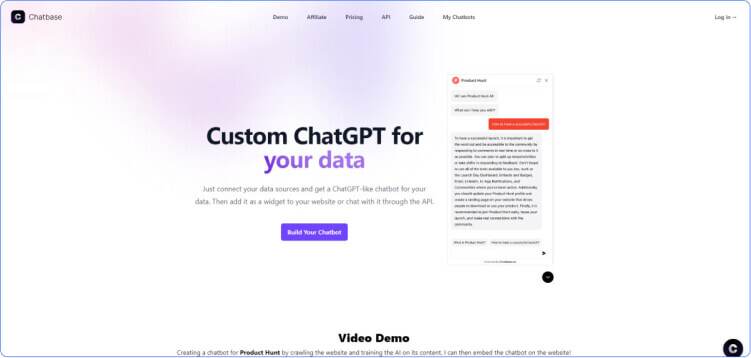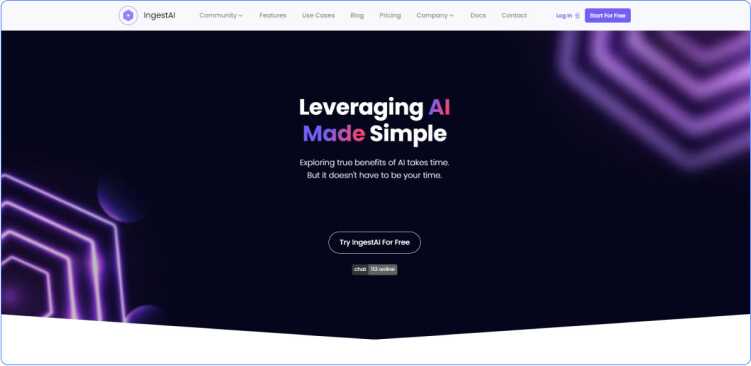Chatbots have emerged as game-changers, revolutionizing how businesses engage with their audience. But you don’t need to be a coding wizard to join the chatbot revolution!
Whether you’re a tech novice or a seasoned pro, these intuitive platforms pave the way for unparalleled customer interactions.
Let’s dive into the realm of no code chatbot builders and discover how you can effortlessly create bots that captivate, convert, and conquer!
Understanding No Code Chatbots
No Code Chatbots have revolutionized the way businesses and individuals develop conversational AI solutions. At their core, chatbots are computer programs designed to simulate human-like conversations with users through text or voice interactions.
No code chatbots come in two main types: rule-based chatbots and AI-powered chatbots. Rule-based chatbots follow predefined rules and responses, making them suitable for handling simple tasks and FAQs.
On the other hand, AI-powered chatbots employ Natural Language Processing (NLP) and machine learning algorithms to understand and respond to user queries more dynamically, allowing them to handle complex interactions and provide personalized responses. This flexibility and ease of development make no-code AI chatbots an attractive option for businesses across various industries.
Choosing the Right No Code Chatbot Platform
Selecting the right no code chatbot platform can significantly impact the success of your chatbot project. Let’s take a look at some essential tips to help you make the best decision:
- Define your requirements: Before exploring different platforms, clearly outline your chatbot’s purpose, functionality, and goals. Determine what tasks the chatbot needs to perform, the channels it will be deployed on, and the level of complexity required.
- Ease of use: One of the main advantages of no-code platforms is their simplicity. Ensure that the platform you choose offers an intuitive and user-friendly interface that allows you to build, train, and deploy chatbots without any coding experience.
- Integration capabilities: Check if the platform can integrate with the systems and applications you already use. Seamless integration with your existing tools, such as CRM software, help desk systems, or APIs, can improve the chatbot’s efficiency and effectiveness.
- Natural language processing (NLP) capabilities: A robust NLP engine is essential for chatbots to understand and respond to user queries accurately. Look for a platform that provides advanced NLP features, including intent recognition, entity extraction, and contextual understanding.
- Multi-channel support: Consider the channels where you want to deploy your chatbot, such as websites, social media, messaging apps, or voice assistants. The platform should support these channels and offer a consistent user experience across all of them.
- Customization options: Differentiate your chatbot by customizing its appearance, voice, and personality to match your brand or specific use case. Look for platforms that allow you to tailor the chatbot’s design and behavior according to your requirements.
- Scalability and performance: Ensure that the platform can handle increasing user demand and traffic without compromising on response times and overall performance.
- Analytics and reporting: Data-driven insights are crucial for improving your chatbot’s performance. Choose a platform that offers comprehensive analytics and reporting features to track user interactions and identify areas for enhancement.
- Customer support: A reliable customer support team can assist you in overcoming any challenges you encounter while building or deploying your chatbot. Find a platform that provides responsive customer support and resources like documentation, tutorials, and forums.
- Pricing and cost: Compare the pricing models of different platforms to ensure they align with your budget and usage requirements. Some platforms offer free tiers or trial periods, allowing you to test their capabilities before committing to a paid plan.
- Security and compliance: Chatbots may handle sensitive information, so safety is crucial. Ensure that the platform adheres to industry standards and complies with relevant data protection regulations.
- User reviews and testimonials: Research and read reviews from other users to get insights into their experiences with the platform. This can help you understand its strengths and weaknesses from a user’s perspective.
5 Best Popular No Code Chatbot Builders
These pioneering platforms empower you to create, integrate, and deploy chatbots with ease, reshaping customer engagement in an ever-evolving digital landscape.
1. REVE Chat
REVE Chat is a customer engagement platform offering a no-code chatbot builder and live chat, video chat, co-browsing, and other customer support tools. It allows you to create AI-powered chatbots without any coding knowledge.
Key Features
- Live Chat and Chatbot Integration: Offers both live chat and chatbot capabilities, allowing a seamless transition between automated and human-assisted support.
- Conversational AI: Utilizes AI-powered natural language processing (NLP) to understand user queries and respond intelligently.
- Multichannel Support: Can be deployed on websites, social media, mobile apps, and more.
- Visitor Insights: Provides real-time visitor monitoring and analytics to understand user behavior and preferences.
- Customization: Allows customization of chatbot appearance, behavior, and responses to align with your brand.
2. Chatfuel
Chatfuel is a widely used no code chatbot platform that integrates with Facebook Messenger and Telegram. It provides an easy-to-use interface for building chatbots, primarily focused on conversational flows for customer support and marketing.
Key Features
- Facebook Messenger Integration: Specializes in building chatbots for Facebook Messenger, making it easy to reach a broad audience.
- Visual Flow Builder: Employs a drag-and-drop interface for building chatbot conversational flows.
- Broadcasting: This enables you to send broadcast messages to your chatbot subscribers.
- Plugin Library: Provides a variety of plugins to enhance chatbot functionality, such as RSS feeds and Google Sheets integration.
3. Tars
Tars is a versatile chatbot builder that allows you to create conversational chatbots for various use cases, including lead generation, customer support, and more. It offers a drag-and-drop interface with a strong focus on casual design.
Key Features
- Conversational Landing Pages: This allows you to create interactive conversational landing pages to engage visitors effectively.
- AI Chatbot: Utilizes AI and machine learning for natural language understanding and more thoughtful responses.
- Multi-language Support: Supports building chatbots in multiple languages to cater to diverse audiences.
- Analytics and Reports: Provides detailed analytics and reports on chatbot performance and user interactions.
- Integration: Integrates with third-party tools for data exchange and lead generation.
4. Chatbase
Chatbase, owned by Google, provides analytics and insights for chatbots. It helps you measure and improve the performance of your chatbots by analyzing user interactions. Note that Chatbase is more of an analytics tool and does not have a built-in bot builder.
Key Features
- Analytics Platform: Focuses on chatbot analytics and insights, providing data to measure and improve chatbot performance.
- User Interaction Analysis: Helps you understand user behavior, identify user intents, and analyze conversations.
- Actionable Suggestions: Offers suggestions based on analytics data to optimize your chatbot’s responses.
- Intent Detection: Assists in identifying user intents and tracking their completion through conversations.
5. Ingest AI
Ingest AI is a chatbot platform enabling you to build AI-driven chatbots without writing code. It supports various channels like websites, Facebook Messenger, and WhatsApp, and offers features like natural language understanding and sentiment analysis.
Key Features
- Multi-channel Deployment: Supports deploying chatbots on websites, social media platforms, and messaging apps like WhatsApp.
- Natural Language Understanding: Employs NLP to understand user queries and provide contextually relevant responses.
- Sentiment Analysis: Analyzes user sentiment to gauge user satisfaction and adjust chatbot responses accordingly.
- AI Training: You can train the chatbot using sample conversations to improve its understanding and accuracy.
- Integration: Integrates with various platforms and APIs for seamless data exchange and automation.
Getting Started with Building Your No Code Chatbot
Begin by designing conversational flows that align with your chatbot’s objectives, creating a user-centric experience. Integrate the chatbot across various platforms to meet your audience where they are, expanding its reach and utility.
Enhance its capabilities with no-code AI, enabling it to understand and respond intelligently to user queries. Rigorous testing and optimization ensure a smooth user experience, while deploying the chatbot brings your creation to life, ready to assist and engage users effectively.
This holistic approach, combined with continuous refinement, empowers you to build a sophisticated no code chatbot that elevates user engagement and fulfills your goals.
1. Designing Conversational Flows
Designing conversational flows is the foundation of your chatbot’s user experience. It involves mapping out the interactions between the chatbot and users to create a seamless and effective dialogue.
Create user personas to understand your target audience and tailor the conversation to their needs. Use a flowchart or visual tool to map out different user paths and potential conversations.
Pro Tips
- Keep it Natural: Design conversations that mimic human interactions. Use language that your users are familiar with and maintain a conversational tone.
- Anticipate User Needs: Anticipate potential user questions and provide clear, concise responses. Use branching logic to guide users through different scenarios.
- Use Buttons And Quick Replies: Incorporate buttons or quick reply options to provide users with predefined choices, making interactions smoother.
2. Integrating Chatbots with Various Platforms
Integrating your chatbot with different platforms expands its reach and functionality. It enables users to interact with the chatbot on their preferred channels.
Identify the platforms where your target audience is most active – this could be your website, social media, messaging apps, or even voice assistants. Explore the integration options provided by your chosen no code chatbot builder for each of these channels.
Pro Tips
- Choose Wisely: Focus on the platforms that align with your business goals and audience preferences. Not every channel may be relevant for your chatbot.
- Consistency Matters: Ensure a consistent user experience across all integrated platforms. The chatbot’s personality, branding, and responses should remain uniform.
3. Enhancing Chatbot Capabilities with No-Code AI
No-code AI empowers your chatbot to understand and respond intelligently to user queries. Leveraging AI can greatly enhance user satisfaction and the effectiveness of your chatbot.
Explore the AI capabilities offered by your chosen no-code platform. This could include natural language processing (NLP) for understanding user intents, sentiment analysis, and contextual understanding.
Pro Tips
- Define Intents and Entities: Clearly define the different intents (user goals) and entities (specific information) your chatbot needs to recognize. This improves accuracy in understanding user queries.
- Train and Iterate: Train your chatbot by providing sample conversations. Continuously monitor and refine its performance based on real user interactions.
4. Testing and Optimizing Your No Code Chatbot
Thorough testing and optimization ensure that your chatbot delivers a smooth and effective user experience. This step helps you identify and rectify any issues before deploying the chatbot to a wider audience.
Conduct rigorous testing of your chatbot by simulating various user scenarios and interactions. Pay attention to its responses, accuracy, and user satisfaction.
Pro Tips
- User Acceptance Testing: Involve a group of real users to test your chatbot and gather feedback. This can help identify usability issues and areas for improvement.
- Continuous Improvement: Regularly review analytics and user feedback to identify bottlenecks and areas where the chatbot can be optimized.
5. Deploying Your No Code Chatbot
Deploying your chatbot is the final step in making it accessible to your audience. This involves making the chatbot live on the selected platforms and channels.
Pro Tips
- Soft Launch: Consider a soft launch initially, making the chatbot available to a limited audience. This allows you to gather more feedback and ensure the chatbot’s performance under real-world conditions.
- Promote and Educate: Once fully deployed, promote the chatbot to your audience and educate them on its capabilities and usage.
Conclusion
The future of customer engagement has arrived, and it’s beautifully code-free. No longer confined to the realm of tech experts, chatbot creation is now a playground for everyone with no code chatbot builders.
From understanding user intents to offering personalized solutions, these platforms have rewritten the rules of interaction. So, whether you’re a small business owner aiming to enhance customer service or a marketer seeking to amplify brand reach, no code chatbot builders put the power of innovation at your fingertips.
Embrace the era of effortless, engaging conversations and watch as your chatbots redefine what’s possible in the world of digital engagement. The stage is set – it’s time to chat your way to success!

